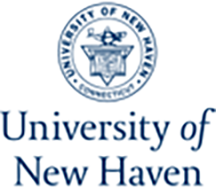Date of Submission
5-14-2025
Document Type
Thesis
Degree Name
Master of Science in Forensic Science
Department
Forensic Science
Advisor
Robert Powers, Ph.D.
Committee Member
Heather M. Coyle, Ph.D.
Committee Member
Na, Liu, Ph.D.
Keywords
Gamma-Hydroxybutyrate (GHB), Drug Facilitated Sexual Assault, Neurotransmitter Gamma-Aminobutyric Acid (GABA), Significant Central Nervous System Depression, Ethanol, Competitive Inhibitors
MeSH
Gamma-Aminobutyric Acid, Sodium Oxybate, Ethanol
LCSH
GABA, Gamma-hydroxybutyrate, Ethanol
Abstract
Gamma-hydroxybutyrate (GHB), is a schedule I controlled substance, not uncommonly encountered in forensic casework as a euphorigenic, and also as an incapacitating agent in drug facilitated sexual assault cases. GHB is also an endogenous compound, structurally related to the inhibitory neurotransmitter gamma-aminobutyric acid (GABA). Mechanistically, the drug appears to act to some extent as an agonist of GABAA and GABAB receptors, resulting in chloride influx or potassium efflux in post synaptic neurons, respectively. Toxic effects in elevated doses include significant central nervous system depression, with the potential for loss of consciousness, and the potential for fatal respiratory depression. GHB toxicity can apparently be exacerbated by co-ingestion with ethanol. GHB metabolism has been presumed to primarily occur via oxidation to succinyl semialdehyde, and subsequently succinate, with resulting entry to the TCA cycle and elimination as CO2. However, conjugation of GHB in a manner similar to that of ethanol (e.g. the glucuronide, and sulfate form) has been demonstrated. Based on the structural similarities between the C1 and C2 of ethanol and C3 and C4 of GHB, we have hypothesized that ethanol and GHB would simultaneously function as competitive inhibitors, and substrates of the glucuronosyl transferase active on both compounds. A consequence of such effects would be an overall increase in the concentration of the drug, resulting in prolonged half-life and increased AUC. We have evaluated our hypothesis using a modified microsomal enzyme assay containing both ethanol and GHB, (1.0, 1.7 and 3.0 g/dL and 0.5, 2 and 5 uM, respectively) with detection of ethyl-glucuronide via HPLC-MS. Our resulting data indicates that GHB is able to function as a competitive inhibitor of ethanol, with an increased Km in proportion to the concentration of GHB. In this experiment, the concentration of GHB was relatively low, and that of ethanol were high, compared to levels encountered in many drug abuse scenarios.
Recommended Citation
Loison, Julie, "Effect of Ethanol on γ-Hydroxy Butyrate UdpGlucuronosyltransferase Activity" (2025). Master's Theses. 243.
https://digitalcommons.newhaven.edu/masterstheses/243

